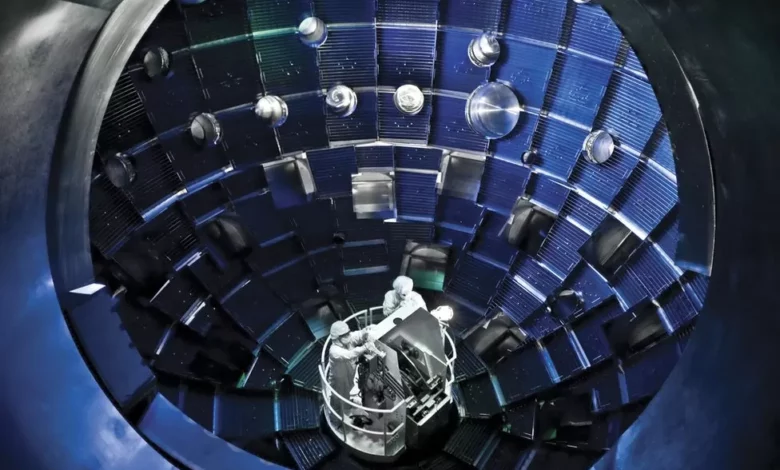
A major breakthrough has been announced by US scientists in the race to recreate nuclear fusion.
Physicists have pursued the technology for decades as it promises a potential source of near-limitless clean energy.
On Tuesday, researchers confirmed they have overcome a major barrier – producing more energy from a fusion experiment than was put in.
But experts say there is still some way to go before fusion powers homes.
The experiment took place at the National Ignition Facility at the Lawrence Livermore National Laboratory (LLNL) in California.
Nuclear fusion is described as the “holy grail” of energy production. It is the process that powers the Sun and other stars.
It works by taking pairs of light atoms and forcing them together – this “fusion” releases a lot of energy.
It is the opposite of nuclear fission, where heavy atoms are split apart. Fission is the technology currently used in nuclear power stations, but the process also produces a lot of waste that continues to give out radiation for a long time. It can be dangerous and must be stored safely.
Nuclear fusion produces far more energy, and only small amounts of short-lived radioactive waste. And importantly, the process produces no greenhouse gas emissions and therefore does not contribute to climate change.
But one of the challenges is that forcing and keeping the elements together in fusion requires very large amounts of temperature and pressure. Until now, no experiment has managed to produce more energy than the amount put in to make it work.
The National Ignition Facility in California is a $3.5bn (£2.85bn) experiment.
It puts a tiny amount of hydrogen into a capsule the size of a peppercorn.
Then a powerful 192-beam laser is used to heat and compress the hydrogen fuel.
The laser is so strong it can heat the capsule to 100 million degrees Celsius – hotter than the centre of the Sun, and compress it to more than 100 billion times that of Earth’s atmosphere.
Under these forces, the capsule begins to implode on itself, forcing the hydrogen atoms to fuse and release energy.
On announcing the breakthrough, Dr Marvin Adams, deputy administrator for defense programmes at the US National Nuclear Security Administration, said that the laboratory’s lasers had input 2.05 megajoules (MJ) of energy to the target, which had then produced 3.15 MJ of fusion energy output. -BBC






